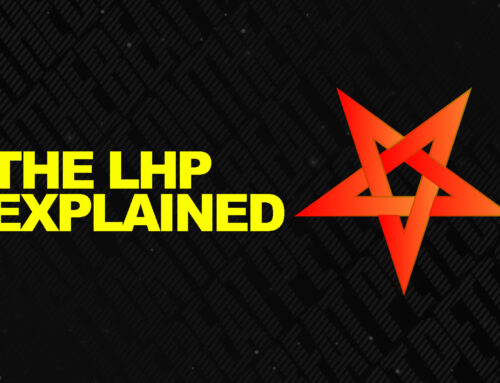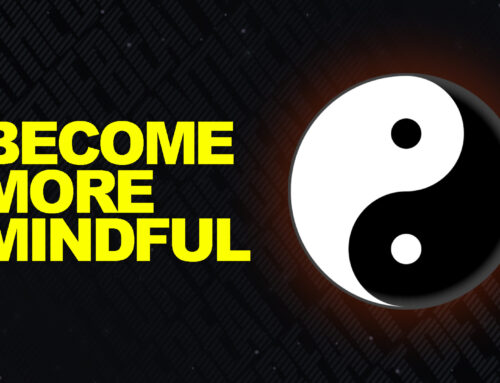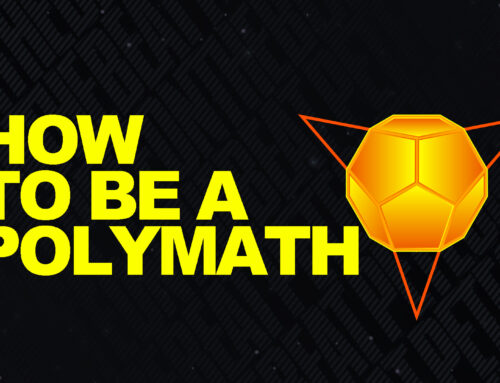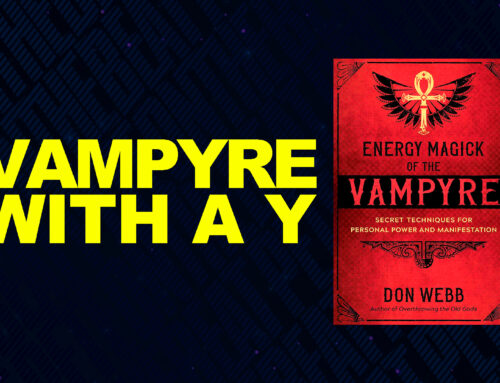Introduction
If you’re a millennial doing magick, chances are you used, have, or at least heard of Donald Michael Kraig’s Modern Magick. Commonly recommended as the go-to for beginners, the book is one of the best-sold occult titles close to Regardie’s The Golden Dawn. Starting with the author’s story and how its material got updated, Modern Magick mainly uses the Golden Dawn system… Though it also incorporates Wicca and Eastern practices.
Unlike others on the same thematic, the book is extremelly easy and pleasant to read, having a tone similar to some self-help bestsellers. Close to 500 pages, Modern Magick is very eclectic, packing plenty of material. Since summarizing it all would be lengthy and unreasonable, I’ll focus this review on what I enjoyed and didn’t enjoy the most after having it for five years.
Magickal Powers
Right from its start, Modern Magick teaches two fundamental rules:
“No one can give you “magical” powers. You have to earn them. There’s only one way to do this:
Practice, Practice, Practice!” p.7
An identical notion is also emphasized in Regardie’s The One Year Manual. It means that the only way to increase proficiency with Magick isn’t by striving to buy and read all available books but by gaining first-hand experiences. The more, the better.
Real Magick
Modern Magick separates the fictitious movie-and-fairytale magick from the actual real-life practices. It also notes that the actually-working magick seldom does that immediately, and instead, its effects kick in gradually, saturating your life with changes…
“The key difference between the “magic” in fairy tales and movies and “magick” as practiced by tens of thousands of people around the world today and in the past is that most real magick does not occur instantaneously. “As an example, if you worked a ritual to bring you money, it may take a week or two for the money to arrive. When it does arrive, it would come only by natural means. But, if you practice and properly perform your ritual, come it must!…” p.7
Changes
There are several reasons why fully comprehending this is so crucial. One is that it relieves you from the ridiculous expectancy of something paranormal happening. Freed from that, you can focus on the bigger picture by examining the subtle arrangements in your life. It also filters out the kind of person who got into magick, hoping to bring excitement to their lives by experiencing something of that nature.
The second is that whatever change occurs, it will always be under the laws of our physical reality, Malkuth, having a reasonable, logical explication. Hence there likely won’t be any spoon-bending or objects moving in your room. In the example, Modern Magick provides, that could be the magick and money manifesting as you applying for a job interview, eventually being approved, and getting the opportunity to have a good salary. Or by receiving some inheritance in a perfectly legitimate manner.
Becoming a Magician
“Magick isn’t something you do. Magick is something you are…” p.88
Elaborating on that, DMK explains that once you step on the path, everything starts feeling related magickally, and thus you begin seeing the world from a different perspective. Being a magician starts with letting magick permeate your entire being, adopting the “magickal” mindset.
“When magick becomes your way of thinking, acting, and breathing, then, and only then, will be a true magician…”
Real Science
Modern Magick stresses that Magick is an empirical science. And that’s precisely how to approach your workings.
“Magick — real magick — is an experimental science. One of the first things a scientist learns is to keep a record of his or her work. Therefore, as part of your work as a magician, it is important to keep a record of your practices, experiences, thoughts, and dreams. This should be done in two separate journals or diaries…”
Journaling
While the instructions on ritual journaling are pretty standard, Modern Magick provides a pro-tip on remembering dreams. That’s commanding your mind by declaring it’s your choice to memorize them right before falling asleep. I found this quite indispensable in the earliest stages of my practice. On the contrary, the less I needed it as my workings progressed. And now, I actually have difficulties not remembering the dreams.
The Magickal Mindset
All this doesn’t mean getting sucked at memorizing correspondences, collecting books, or not having a life besides practicing and journaling. It implies adopting the magickal mindset so you can become your absolute best in all aspects of your life. This is very well clarified in the Lon Milo Duquette’s forward:
“If there were to give the novice magician one piece of advice at the beginning of “his or her” career, it would be, “Study and practice magick, but please, have a life!” XXII Foreword
What is Magick
Introducing the student to Magick via the Crowley’s and Dion Fortune’s definitions, Kraig brings additional clarity by outlining his.
“Magick is the science and art of causing change (in consciousness) to occur in conformity with will, using means not currently understood by Traditional Science…”
Modern Magick also distinguishes three different types of magick.
Types of Magick
“White Magick is the science and art of causing change to occur in conformity with will, using means not currently understood by traditional Western science, for the purpose of obtaining knowledge and Conversation of your Holy Guardian Angel…”
Using Yoga to exemplify white magick, Kraig explains that mysticism is the Yoga of the West. Unlike organizations like the Temple of Set, Kraig defines Black Magick as…
“…the science and art of causing change to occur in conformity with will, using means not currently understood by traditional Western science, for the purpose of causing either a physical or non-physical harm to yourself or others, and is done either consciously or unconsciously…”
“Grey Magick is the science and art of causing change to occur in conformity with will, using means not currently understood by traditional Western science, for the purpose of causing either a physical or non-physical good to yourself or others, and is done either consciously or unconsciously…”
Modern Magick defines all its practices as Grey Magick, improving the quality of life of you and your loved ones while increasing awareness of your HGA’s presence and guidance. It also stresses to not mess with black magick since there’s a law of Karma. Grey Magick has its basis in creating things in the astral plane. And as later explained, it should always be preceded by divination.
Tarot
Modern Magick introduces the student to the Tarot’s enormous significance in Magick. Examining some classic decks, the book recommends the Golden Dawn, BOTA, and Hermetic Tarot decks as the best suitable for its material. It also defines the classic Rider-Waite as acceptable due to ommissions and the Thot Tarot as inappropriate since it’s unconventional and more complex. Learning the Tarot, DMK explains, requires using it daily while employing correspondences as a language to translate your readings.
“The only way to learn the Tarot is to use it constantly. Try memorizing the meanings of the cards, one card per day. Also, try giving yourself small readings on a daily basis. However, also don’t count on the accurateness for at least a month. You were probably not too “accurate” when you first learned to ride a bicycle or drive a car, but as you practiced and became experienced, success in bike riding and driving wasn’t only assured, it became part of you, and those skills became second nature to you…” p.28
Unlike others presenting the traditional Celtic Cross, Modern Magick recommends the Tarot Hexagram split, which I find pretty handy. It also has McGreggor Matters’ meanings of the Major Arcana, which I believe are derived from Regardie’s the Golden Dawn.
Meditation
Modern Magick distinguishes true meditation from new-age practices, explaining how essential meditating is on the magickal path.
“In true meditation, the goal is to silence the inner voice…”
This means remaining aware while switching off your day-day “I.” So your deeper consciousness can kick in. Rather than boring you to death by recommending “think of nothing” or “clear your mind,” Modern Magick offers a technique inspired by the traditional Tatwa visions. That’s contemplating a card, scanning its artwork thoroughly. And then reproducing and erasing it within your mind.
Qabalistic Correspondences
Having a Jewish background, DMK provides a great introduction to the divisions and roots of Qabalah and, of course, Etz Chayim. Revealing how the parts of the soul in Qabalah correspond to the Freudian, Jungian, and even some Eastern systems, Modern Magick includes tables of attributions. Also, how the 22 Major Arcana map to the tree’s paths.
Like some books by the Ciceros, Modern Magick incorporates a small quiz after each lesson, ensuring you’ll retain most of the information. Having great utility, those are divided into two groups. The first test your knowledge of the presented in the lesson material, and the second keeps you accountable for doing the work. As noted in my video on how to start practicing magick, you can plug such questions into apps like Anki and Quizlet and employ the method of active recall.
Basic Rituals
Abundant with wisdom to penetrate beginners’ minds, lessons 1 to 6 present the course’s most essential techniques. The rituals include Relaxation, Tarot Contemplation, and Hexagram Split, True Meditation, Lesser Banishing Pentagram and Hexagram, Middle Pillar, Rose-Cross, Supreme Invoking, and the Opening by Watchtower. Also, DMK’s own — “Identify, Objectify, Banish” (IOB) — that’s designed to erase unwanted aspects of your persona.
Excessive Banishing
One of the few things I dislike about Modern Magick is its enormous emphasis on banishing. Although introducing the lesser pentagram and hexagram rituals, it barely says anything about their invoking versions. On the other hand, more traditional Golden Dawn-ers and A.A. adepts use both versions invoking in the morning and banishing in the evening.
No Fields of Operation
Besides letting the student adore both aspects of divinity, that provides the tools for the different kinds of operation: invoking (empowering), banishing, centering, the more-recently gaining popularity operant and Hermes fields. Regrettably, Modern Magick says nothing about any of them, mentioning LIRP once in the section on SIRP.
Through first-hand experience, I learned that knowing how and when to use each field of operation is extremelly essential for practical Magick. Later I also found that identical perspectives are supported by magicians like Jeff Rhoades and Scott Stenwick. Depending on the person, slightly favoring banishing might be somewhat reasonable. As a hardcore introvert, that mainly capsulated and isolated me from the external world. This didn’t mean detaching from reality; instead, it felt like putting a glass barrier between me and others while keeping my life on hold or pause.
The ancient proverb says:
“Invoke often! Enflame thyself with prayer!”
Modern Magick rearranges that, turning it into:
“Do the LBPR with feeling! Do it often! Enflame yourself with prayer…”
Not the Best for Introverts
If followed by periods of elemental invocations, a similar scenario might be appropriate for short. Rather than advancing your practice with that, Modern Magick brings the Rose Cross rite, which besides centering consciousness to Tiphereth, produces its own encapsulating effects, making you unnoticeable to the outer world. Certainly having its application, the Rose Cross ritual likely isn’t the one to incorporate if wanting your work recognized.
Comment
On the contrary, the lectures on those rituals are very in-depth, easy to read, and profoundly exciting. I cannot stress this enough. Also to appreciate is Kraig’s emphasis on visualisation, presence, and proper vibration. Some people might object that the Middle Pillar is an invocation, and you call the 4 Archangels with LBRP. My experience showed that’s not enough to counterbalance excessive banishings. Hence until getting to lesson 5, part 6, Modern Magick doesn’t teach any actual invocation. Warning to not become one of those believing LBRP is “high-level magick,” in the same Modern Magick introduces SIRP.
Some Truths about LBRP
“I am often amazed at the incompetence of people claiming to be ceremonial magicians. Many of those whom I have met seem to think that the LBRP is the highest level of ritual magick, then wonder why Pagans criticize them for their “complicated rituals…” (…)
“The Supreme Invoking Ritual of the Pentagram is a more powerful version of the Lesser Invoking Ritual of the Pentagram. As you can guess, it can become the Supreme Banishing Ritual of the Pentagram by using the banishing forms of the pentagrams instead of the invoking ones. However, the purpose of this ritual at this time in our work is to bring into our lives the forces of the elements.
“At this time, practice this ritual only in the morning. When doing this work, at this time in the course, always follow it with the LBRP. Do not perform the Supreme Invoking Ritual of the Pentagram (SIRP) in the evening. This is not because SIRP is dangerous, but because it can be very invigorating and might cause you difficulty falling asleep. This is especially true when you are in the learning process and have not perfected the ritual…” p.179-180
Breaking the Coherency
Several things baffle me whenever recalling this section. The first is that Modern Magick introduces the elements (one by one), as mentioned earlier. But rather than finishing that, it examines fire after incorporating SIRP Malkuth, which brings all 4 to your sphere of sensation.
The second is that…
The only work with the other three before SIRP is mindfulness exercises mainly teaching the elements’ properties. Some of those can be recognized from the Golden Dawn and Regardie books. This is fantastic for shifting your perception and understanding the “elements” are much more than their physical representations. On the contrary, such exercises do nothing to exert elemental power to use and deal with in your day. Therefore, unless you study and practice other material, as Modern Magick recommends, you have no idea how each element works. For instance: Staying naked next to a burning fire doesn’t teach you what invoking fire actually does.
Nevertheless, I’m not arguing with Kraig. I’m only suggesting that becoming acquainted with the elements via actual rituals to back those lessons up and completing all four might be a more optimal strategy before using SIRP and Opening by Watchtower. Also reasonable might be to first get familiar with the names from the elemental tablets and set a declaration of intent whenever using these rites. Modern Magick defines SIRP as a more powerful LIRP… I find this definition vague and incomplete, to say the least.
Lesser, Greater, and Supreme
Although having some similarities, SIRP has a purpose utterly different from LIRP. The Lesser rituals are to set the space establishing one of the mentioned fields. The Greater and Supreme rituals are to attune that space to a specific (zodiacal or elemental) force and conjure a spirit or use that energy in your actual life. It is not that much that Greater or Supreme is better or more powerful than the lesser. It is more powerful, sure. Yet, the main difference is that it is specific or particular, while the Lesser is general. Oddly, Modern Magick omits all that.
SIRP
SIRP is exceedingly capable. Based on personal experience previously stacking its Malkuth version with the 5=6 MP daily and now using the elemental consistently, you can do so much with it. Moreover, if hitting it daily, you can even set the proper environment for what Dr. Christopher Hyatt says to “undo yourself.” SIRP offers so much that you may not believe it or perhaps get frightened and want to abandon it, especially if you don’t have any prior experience with invocations. (Which was what I did initially).
After taking a different approach, I see SIRP as the single best tool a solo practitioner can use to grasp the ins and outs of each element. The more I use it, the more I find it indispensable, supposedly experiencing what Regardie meant when saying that the Enochian magick gives the magician a strong beating heart. Also, what Liam Thomas Christopher refers to in Kabbalah Magic and the Great Work when defining GD Enochian as the “crowning jewel” of the Golden Dawn system.
Grade Signs
SIRP is done by rending the veil or giving the LVX signs in between the spirit and elemental pentagrams. While the Ciceros advocate using both in their Golden Dawn Magic book, Modern Magick takes all that out, including the god forms given after each elemental pentagram. Presumably… this is because the solo practitioner doesn’t operate under an order. Yet, according to other sources, putting those signs there has a much greater purpose; they open the elemental universes while balancing the energy. Plus, Modern Magick does use the god forms and LVX signs for its solar adorations and keyword analysis.
Living Symbols
Symbols become living beings when you charge them in rituals. It may be a placebo, but deep within, I always felt that rending the veil opens the channel for communication between the spirit and elemental pentagrams, which are further activated by the corresponding god forms.
Personal Experience
Moving away from Modern Magick and including those in my SIRP made a substantial difference. And I don’t think solo practitioners should do differently. In his Magician’s Workbook, Donald Tyson advocates envisioning you open the very fabric of space when rending the veil; I believe you should meditate on that and use it.
Modern Magick provides a clear and concise explication of SIRP. I appreciate that immensely. I don’t enjoy the omission of some of its components, the lack of description for its primary utility, and the absence of recognition of its incredible capabilities and versatility. Modern Magick advises using SIRP Malkuth daily for now, yet it never brings it again, nor does it utilize the rite for elemental versions. I find this strange and unjustified.
Comment
IMHO… regular or better, yet daily usage of SIRP (preferably without closing it with an LBRP) might be the gateway to understanding how magick works, eradicating doubts and delusions. It might also lead to understanding some uncomfortable truths in a daunting but fun and productive way. Especially when considering some people’s notion that the Enochian entities know everything about you. Including things you don’t know about yourself; in the end, it will all be for your greater good. But as students, we know that everything has its polarity. Proceeding with some Yogic exercises, Chinese wisdom, more correspondences, and finally, the fire element, Modern Magick, introduces the rite to platform all your workings, Opening by Watchtower.
Opening by Watchtower
Regarding it as a basis for Grey Magick, DMK considers Opening by Watchtower the equivalent of preparing for a scientific experiment. Not claiming to be an expert in the system, he explains that Enochian makes a rite extremelly powerful due to the language’s incredible impact on the psyche. I wholeheartedly agree with that. He also mentions the story of Paul Foster Case creating his BOTA by removing the Enochian elements from the Golden Dawn system. The exact section teaches how to make the essentials for the Opening by Watchtower. These are the 4 elemental tablets and the Great Tablet of Union. And that leads to a few more things I still have difficulties comprehending.
Different Tablets
The first is that Modern Magick skips bothering with Golden Dawn’s flashing colors which are meant to work in conjunction with the words of power when performing rites. Furthermore, the book never mentions the actual elemental tablets with the Enochian language, colors, and names. Instead, it advocates making Wiccan tablets and a black and white Tablet of Union. I always felt this unnecessarily simplifies the ceremony, diminishing its richness, authenticity, and potency. But you can still use SIRP’s different forms with invoking or operant fields and not need tablets.
Some sources commence Opening by Watchtower with 4 +1 knocks (or bell rings) due to the 4 elements and spirit; others omit that, like Regardie’s Ceremonial Magick, which like others, DMK regards as full of mistakes. Modern Magick uses 1 and 2 knocks before the preliminary banishing pentagram and hexagram rituals. And 9 more before the actual ceremony. After this, Modern Magick gets into consecrating weapons, proceeding to its second part.
Achieving Success
To manifest something physically, you must first create it on the astral. After explaining that the unconscious is the most direct link with the astral plane, DMK reveals an important Qabalistic secret:
“The more emotionally involved you become with your goal, the greater your chances for rapid success…p.246
The reason, Kraig explains, is that the astral plane or the Yetziratic world is related to emotions. And therefore, partially wanting something won’t have the same success as the burning desire for it. IDK about you, but this definitely reminds me of N. Hill’s emphasis on burning desire and Don Webb’s definition of Magick.
“Magick is the art or science of causing change to occur in the microcosm, so a proportionate change will occur in the macrocosm, depending on the passion and precision of the magician…”
High and Low Magick
In the same lesson, Modern Magick distinguishes “High” from “Low” magick, such as the origins of witchcraft. Kraig brings the notion that these definitions originated due to the different demographics in the past. High or Art magick are the systems of the urban people in cities commonly built on higher grounds. Low or Natural magick, on the other hand, are methods of those who weren’t living in the town but rather closer to nature, usually farming, etc.
Flexibility and Magickal Tools
Modern Magick is abundant in explications on making magickal weapons. From materials to paint, the stores to get these from, and the process of putting them in use, crafting your tools. It also offers extensive ceremonies for consecrating each. On the contrary, it gives enormous freedom to those not having access to or time for all that.
“Don’t let the inaccessibility of magickal tools prevent you from doing rituals. Don’t wait until you have that perfect Air dagger to do a ritual. Use a butter knife or a fan. (…) If you don’t have a water chalice made of glass, get one of pewter; or stainless steel; or silver plate; or wood; or use a large seashell; or use a paper or Styrofoam cup. All magickal tools are helpers. The magick is not in them; it is in you. As written before, “Magick isn’t something you do; magick is something you are…”
Talismans and Amulets
Before providing techniques for charging such objects, Modern Magick reveals their difference.
“Today, talismans are used to draw things toward you. Their purposes include obtaining money, luck, health, or love. Amulets are used to keep things away. They protect from evil and bad luck, and help keep one from ill health. (…) A talisman is any object sacred or profane, with or without appropriate symbols, which had been charged or consecrated by appropriate means and made to serve a specific end…” p.253
Lesson 7 of Modern Magick provides a coherent explication of the elements in practical use; it also outlines a “Low Magick” technique for charging a talisman. While I appreciate this exoticness, I miss showing how to achieve such ends using SIRP. Later, the book outlines principles governed by each sephira. It also proceeds with various systems for charging talismans, including Austin Osman Spare’s, The Hermetic Rose Cross, etc. Surprisingly, Modern Magick says nothing about the most traditional way of working with sephirotic energies, the Greater and Supreme hexagram rituals.
Sex Magick
After elaborating on the origins of the grimoires, Goetia, and some spirit evocation techniques, Modern Magick recognizes several types of sex magick. Using the mind to control sexual energy, excitation, and orgasm, the first is Thought Control. Inner Alchemy or White Sex Magick, Kraig explains, is an integral part of Taoist Yoga and Tantric sexual Yoga. Considered by Kraig, Grey Magick, the third type uses sexual fluids to achieve a particular goal. Due to this, it’s associated with Western Alchemy. Unlike what most people think, Modern Magick reveals that sex magick doesn’t always have its origins in the East. Qabalah’s inherent sexuality is a great example, best displayed in Etz Chayim’s polarities and the tetragrammaton.
Reich and the Orgone
Bringing clarity on what’s to be orgasmically potent, i.e., to completely give yourself to the experience without thinking, Modern Magick eloquently juxtaposes the thought-free experience resulting from high-quality sex to the actual goal of true meditation. One way to release Orgone energy is by completely surrendering to your partner and being with them. Yet, this is not the only way, and Tantrics have methods of achieving that at will. The “key” technique in sex magick is entirely eliminating thinking yet holding an idea in mind, especially when orgasming.
“Whatever thought is in your mind at the point of orgasm goes directly to the unconscious and into the astral plane. It must manifest. That is why the thought held in the mind at the instant of orgasm must come into existence. (…)But that is also the difficulty. To open up the unconscious, we must be orgasmically potent. This means we must, temporarily, lose our sense of self, our ego. Unfortunately, that aspect of our being is locked up with our logical, reasoning self. If we lose that, how we can keep an idea in our mind when having orgasms…” p. 341
Sigils and Sex
Fortunately, there are sigils to use. As we learn early on the path, the unconscious does not work with words but operates with symbols and images. So the key is creating a sigil and bringing that to your mind. Turning the ego off during sex reminds me of Crowley’s saying that during orgasm, you have the opportunity to become one with everything and thus change everything.
Considering sex abuse, engaging your partner in sex magick without letting them know, Modern Magick criticizes some Crowley approaches. It advocates being perfectly transparent about your plans and intentions and even helping your partners prep by suggesting materials to study. Modern Magick stresses that the more versed all its participants are, the greater the magical power the working exerts. Apparently, this includes sex magick.
Your Own Way
Like many others, Modern Magick elaborates on how most people refuse to take responsibility for their thoughts and actions, obediently following religious, political, and cultural dogmas. Regarding that as the past, it explains it as a byproduct of the Piscean Age. It also suggests that specific individuals begin to wake up doing their own thinking. Defining all practitioners of Modern Magick as such people, Kraig explains that with the Aquarian age. Oddly, he mentions nothing about the different eons nor Thelema’s notion of “True Will.” This section includes two wisdom gems that the more I practice, the more I appreciate.
“The ultimate magickal wisdom cannot be communicated to you by any person or group…”
Ephasizing the importance of seeking independently, Modern Magick explains that the so-called “lost word” or “secret name of God” can never be received by another person. Instead, it is obtained utilizing magick and various techniques. The three things needed to work any magick are:
- Ability to raise, control, and direct magickal energy;
- The knowledge of what to do with this energy (ability does not equal knowledge);
- A positive attitude or self-assurance;
Kraig stresses that the daily usage of the Middle Pillar, such as the banishing, lesser pentagram, and hexagram rituals, gets the job done unfolding secrets and truths of the mentioned kind. Whether or not that applies to you is something your practice will show.
Comment
On the contrary, opening yourself to SIRP and the fields of operation might show you so much you likely won’t believe it now. The same applies to the entire hexagram formula outlined in books, Modern Magick recommends. Back that with the learned from Modern Magick, and you may experience this section’s second wisdom gem, obtaining what Kraig calls advanced information and knowledge of magickal secrets.
“This knowledge is not available on the physical plane of Earth! It can only be learned from entities on the higher planes…”
These ultimate truths are subjective, personal, and different for each person. An insight I value as a magickal secret might not have the same significance for you and vice versa. How to discover those for you, Kraig reiterates, is by starting the work now.After all this, Modern Magick concludes with some background on more modern systems like chaos magick and NLP and some FAQs.
Final Words
Although Modern Magick is a book I’d no longer use for practical and daily workings, I thoroughly enjoyed its lessons and DMK’s eloquence and excellent writing style. I also appreciate the author’s efforts to make Magick the foundation of your total self-development. This includes stressing the importance of taking care of your health with proper nutrition and exercise and using SMART goals for everything, including your workings.
Sure… There might be better and more accurate books with rituals. There are also different techniques, perspectives, and approaches. Yet often, they are plain unexciting and cumbersome, lacking the ability to ignite the sparkle and make Magick your culture and state of being. As DMK says, good occult authors don’t speak only to your consciousness. They also do that to your unconscious mind. And that is precisely what he does in Modern Magick, igniting that sparkle from within, making you find your own path seeking the proper techniques. For this, Modern Magick remains indispensable as an introductory encyclopedia, especially to otherwise distracted millennials like me. DMK states that:
“Modern Magick is not the alpha and omega of magick, but it gives you the tools to discover your own alpha and omega…”
I believe that definition remains accurate…
- The Left-Hand Path Explained - May 13, 2024
- The Power of Mindfulness Meditation - May 1, 2024
- An Autobiography of Trauma Book Review - April 23, 2024
